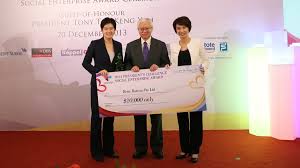That’s when the school implemented a number of changes, including intervention periods for math and reading, under its $6 million, three-year School Improvement Grant. Math teacher Megan Gleason works with then-sophomore Juwon Dugar in an intervention class for geometry students at Danville High School in October 2013. That’s when the school implemented a number of changes, including intervention periods for math and reading, under its $6 million, three-year School Improvement Grant.
DANVILLE In the last 21/2 years, the average GPA at Danville High School has increased from 2.32 to 2.54, enrollment in advanced placement classes has more than doubled and suspensions (through 100 days) have dropped from 604 to 377.
Officials attribute those improvements to changes that were made through a highly-competitive three-year School Improvement Grant.
Now a sustainability team is recommending the DHS Visionary Plan that would allow the school to continue building on its success when the grant ends later this year.
“We’re beyond tapping the surface, and we’re ready to go deeper,” said Principal Kimberly Norton, who, along with others, will present the plan to board members at a special meeting on Wednesday.
Under the School Improvement Grant, the high school received $6 million in federal funding, $2 million a year starting in the 2013-14 school year, to significantly increase student achievement.
The plan’s three major initiatives included: implementing a guaranteed and viable curriculum that’s aligned to the more rigorous learning standards and focused on ensuring that students are college- and career-ready; developing a classroom and schoolwide system of academic behavioral interventions and supports; and using data to inform instruction and professional development.
To do that, the school:
Created common assessments aligned to Common Core standards and developed common exit standards for core classes.
“It was by no means watering down anything,” Norton said. “In fact, we’ve created more rigorous assessments for our students.”
Adding a 30-minute period each day to provide focused interventions in reading and math for students who are falling behind, and enrichment activities for those who aren’t.
Offering freshmen who are behind an extra period of reading or math.
Offering summer school to help incoming freshmen who are behind in reading and math.
Giving teachers time each day to meet in professional learning communities, collaborate and receive meaningful professional development and collaborate.
The grant also funded several positions that were key to the plan’s implementation, including math and literacy coaches and a behavior interventionist.
“It’s been rigorous work. It reviewed financial information, data from surveys with students, staff and parents and teacher interviews to help guide planning.
The plan calls for:
Providing a rigorous curriculum for all students.
Meeting the needs of all students by providing social, emotional and academic support.
Creating incentives to reward students that are making wise decisions.
And examining structures including the four houses or small learning communities Freshman House, New Tech High, GLOBAL House and ACE House seminar and the early-bird hour. Norton said officials will further discuss this topic and present recommendations later, possibly in April.
Under the plan, the school would continue to have the following staff and programs, estimated at $399,903 in the 2016-17 school year:
A behavior interventionist to provide daily mentoring and small group interventions, provide support changes related to Senate Bill 100 (making suspensions and expulsions a last resort), help transition students from alternative settings and suspensions back to high school, participate in freshman team time and support the implementation of BIST, a new social-emotional program.
A college and career guidance counselor to increase individual student time and lead parent sessions on timelines and support available, help students with the college and financial aid application process and ensure that students are on track with their high school timeline/plan.
A dean to address discipline in a timely manner, assist in the increased documentation needed for the new disciplinary legislation and help with things like the student clothing closet and tardy school, allowing administrators to focus more on instruction.
A data analyst to track academics, behavior and attendance and work with teachers on using that data to drive instructional decisions and organize and facilitate the intervention process.
Instructional coaches to organize and lead professional development, mentor new staff, model instruction and work with professional learning communities to improve instruction and facilitate the peer observation process.
A math and reading interventionist to provide support to freshmen and monitor their progress.
Credit recovery periods to provide immediate support to students who are falling behind so that they might graduate on time.
